Huntington City Hall
Introduction
Text-to-speech Audio
Huntington's City Hall was completed in 1915 and reflected the rapid growth and optimism of the city at that time. The Neoclassical building features terra-cotta details, large Corinthian columnns, and an elaborate public auditorium with ornate chandeliers, woodwork, and marble staircases. It was the third city hall built for Huntington, and replaced a structure on Fourth Avenue that also housed the police department, fire department, jail, and county courthouse. City Hall, the Cabell County Courthouse, the Post Office Building (today a federal courthouse), and the Carnegie Public Library were all built between 1899 and 1914 and formed a concentration of governmental and civic architecture in Huntington’s downtown area. City Hall was listed on the National Register of Historic Places in 1986 as part of the Downtown Huntington Historic District.
Images
Huntington's City Hall was completed in 1915; it was the third city hall building, following previous structures from 1871 and 1886.
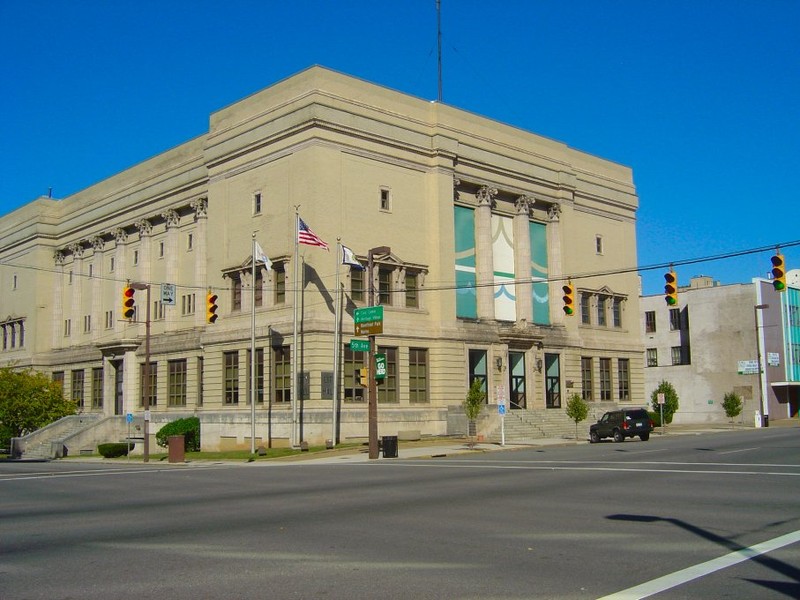
Jean Carlo Stephenson Auditorium
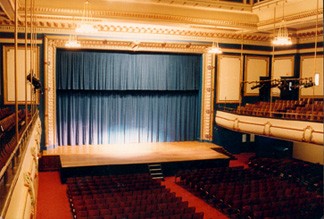
The building was designed by local architect Verus T. Ritter. This vintage postcard was produced shortly after the building's construction in 1915.
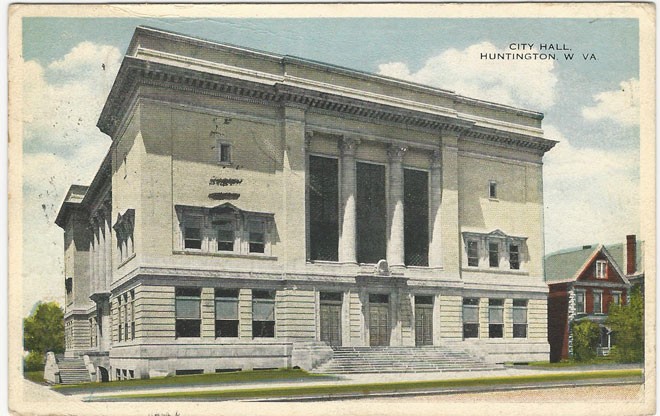
The 1886 City Hall, on the 400 block of Ninth Street, also housed the city jail, police and fire departments, and temporarily served as the county courthouse. Image courtesy of Marshall University Special Collections.
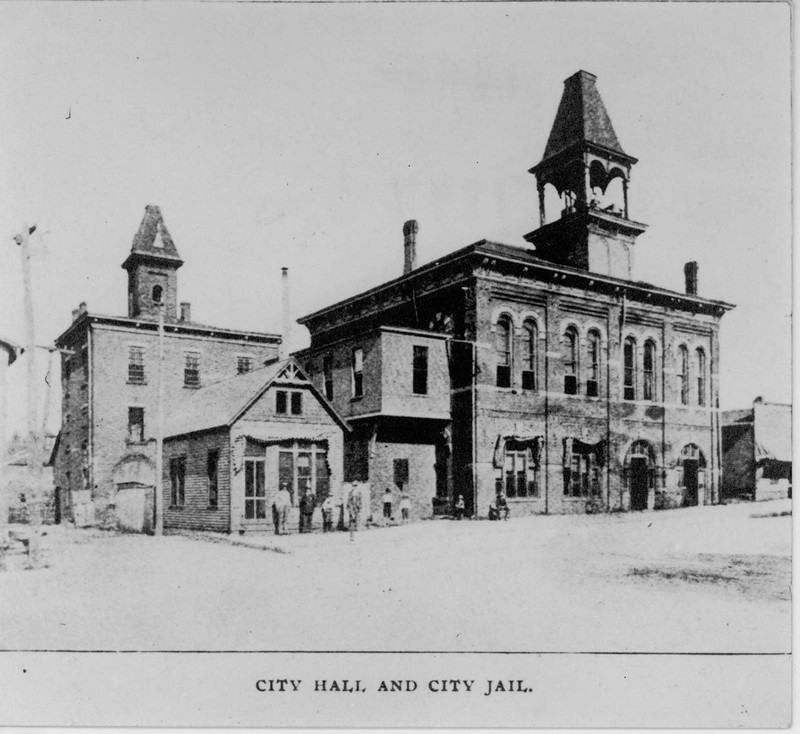
The third and final city hall building, shortly after its completion. Image courtesy of Marshall University Special Collections.
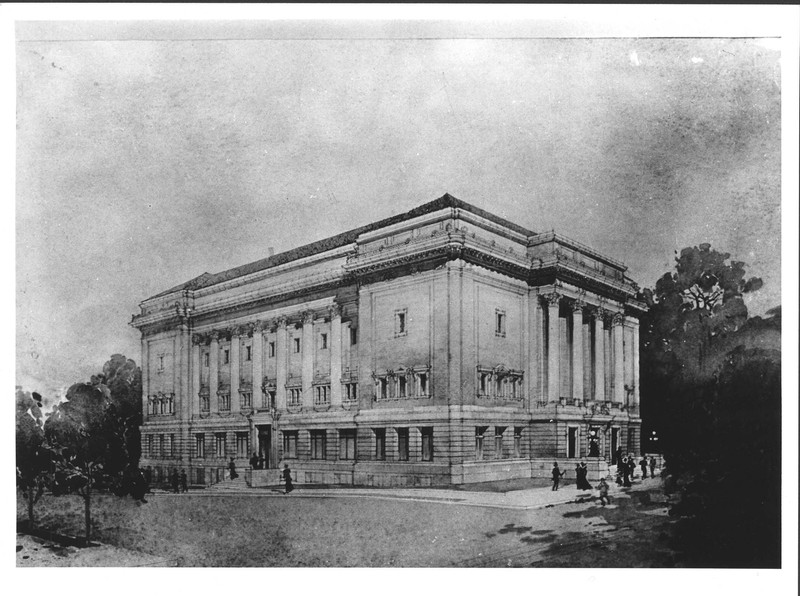
The Clarksburg Daily Telegram, July 22, 1916
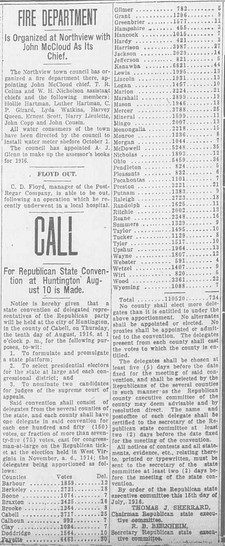
The Wheeling Intelligencer, August 11, 1916
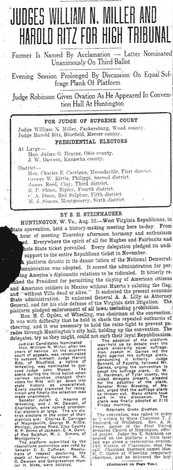
The Wheeling Intelligencer, August 11, 1916
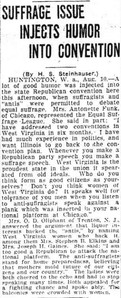
The Clarksburg Daily Telegram, August 11, 1916

Antoinette Funk of Illinois spoke to the Republican State Convention in favor of women's suffrage
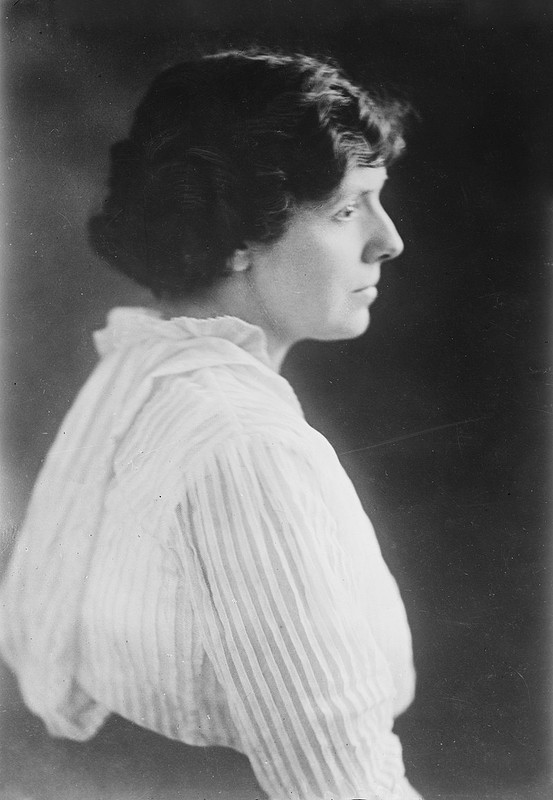
Claire K. (Mrs. O. D.) Oliphant spoke against women's suffrage at the Republican State Convention. (Library of Congress)
.jpg)
The Fairmont West Virginian, September 22, 1920
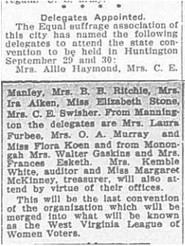
Julia Ruhl, President of the West Virginia Equal Suffrage Association (1917-1920) and first chairman of the West Virginia League of Women Voters
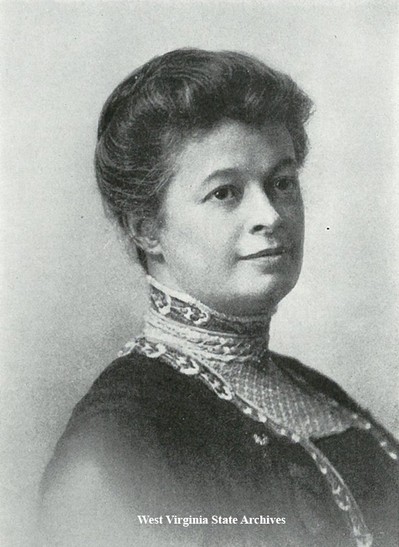
Maud Wood Park, President of the National League of Women Voters, spoke at Huntington in 1920
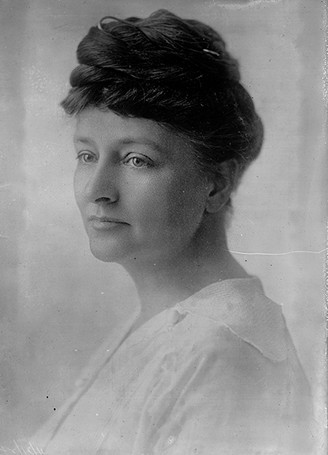
Backstory and Context
Author-Uploaded Audio
Listen to a narration of this entry's description by Kathleen Thompson.
Text-to-speech Audio
Huntington’s first city hall was created shortly after the city was incorporated in 1871. It was a simple, twenty-four-foot by fourteen-foot frame structure on the corner of Ninth Street and Fourth Avenue. This was merely a temporary structure; in 1886 the city council built a larger, red brick building on the 400 block of Ninth Street. In addition to the municipal government, this facility also housed Huntington’s fire department, police department, and jail. From 1887 until 1901 it also housed the Cabell County Court until a new courthouse building was constructed.
In February 1911 city leaders determined that Huntington needed a larger, more impressive city hall to signify the city’s growth and prosperity. A plot of land was purchased on the corner of Fifth Avenue and Eighth Street for $44,000, an extravagant sum at the time. The new city hall would be located across the street from both the Cabell County Courthouse and the post office building (today the Sidney L. Christie Federal Building); it was also a short walk away from the Carnegie Public Library. These facilities made this area on Fifth Avenue the center of governmental and civic activity in Huntington.
Local architect Verus T. Ritter was contracted to design the new city hall. Some of his other notable works in Huntington included the Huntington High School building, Huntington National Bank Building, Central Christian Church, and Johnson Memorial Methodist Church. Construction of City Hall was completed by 1915 at a cost of around $115,000. The building was designed in the Neoclassical style, which was a common feature of public buildings at that time. The structure included brick, granite, and limestone, with some terra-cotta ornamentation and Corinthian columns. Shortly after the opening of the new city hall, the former building from 1886 was demolished.
One notable component of City Hall is a 2,500 seat auditorium located in the center of the building. The ornate facility hosts a number of community performances and events. At one point the auditorium sat disused and was used as storage space. During the 1980s proposals were floated to convert the auditorium into offices. Instead the auditorium was restored as part of a series of renovations and redecorating to City Hall undertaken by the City of Huntington Foundation in the late 1980s. The refurbishment project was directed by Jean Stephenson; in honor of her efforts, the auditorium was renamed the Jean Stephenson Auditorium in 1992.
Republican State Convention, Huntington, WV, August 1916
The Republican State Convention was held at Huntington City Hall on August 10, 1916. The purpose of the convention was to select presidential electors for the state, nominate two candidates for the West Virginia supreme court of appeals, and set a state Republican platform. During the convention, the issue of women’s suffrage was a central issue because of the upcoming public referendum on the topic in November 1916. After several attempts, the West Virginia House and Senate had voted in 1915 to send a women’s suffrage amendment to the state constitution through to a public vote. As a result, suffrage leaders were very active in 1916 campaigning for support at the polls.
Suffragist Antoinette Funk, former chair of the National American Woman Suffrage Association, addressed the Republican State Convention in favor of suffrage. Claire K. (Mrs. O. D.) Oliphant spoke against women’s suffrage, representing the National Association Opposed to Woman Suffrage. The West Virginia Republican Party did include a woman suffrage “plank” in their party platform that read: “The Republican Party submitted to a vote of the people of West Virginia an amendment to our constitution giving the right to vote to women. It is the belief of this convention that the best purposes of government will be advanced by the widest participation in public affairs of all intelligent citizens and we do not believe that the power to participate wisely in public affairs is limited to sex.”
Final Meeting of the West Virginia Equal Suffrage Association:
In September 1920, after the ratification of the 19th Amendment and in preparation for the first election in which women would go to the polls, the West Virginia Equal Suffrage Association met for the last time in Huntington. Presiding over the final convention was WVESA president Julia Ruhl. This convention was followed by the founding of its replacement organization, the West Virginia League of Women Voters. The National League of Women Voters was founded in early 1920 by the women of the National American Woman Suffrage Association to help women engage with voting and politics once the 19th Amendment was ratified. The work of ratification and suffrage complete, West Virginia’s women joined the new organization and focused on the new goals of training women to engage in this new citizenship responsibility. President of the National League of Women Voters, Maud Wood Park, spoke at the Huntington meeting. Julia Ruhl was chosen as the first chairman of the West Virginia League of Women Voters with Mary C. Burks (Huntington, WV), Mrs. J. B. Stratton (Williamson, WV), and Mrs. H. D. Rummell (Charleston, WV) as the other officers. On the board of directors were Dr. Harriet B. Jones, Mrs. W. L. Lipscomb, Elsie Murphy, and Mrs. John A. Shields. At the conclusion of the Huntington meeting Marie B. Ames of St. Louis held a citizenship school to educate women about political issues, and this kicked off a state-wide effort to register women to vote before the November 1920 election.
President of the Huntington Equal Suffrage Association, Nancy Murray Mann, opened the 1920 meeting of the WVESA with opening remarks that stated, in part:
"I feel very much like a battle-scarred veteran this morning, felicitating his comrades in arms; for arent’ you my comrades?
Have we not fought a good fight, held many a skirmish, managed many a maneuver, bivouac[k]ed for days and nights at the very seat of justice, marching ever with our faces to the foe, never raised the white flag, never learned the word retreat?
But today the weariness of battle is forgotten, the bitterness buried and we remember only to rejoice in a victory we have won; not alone for the women of West Virginia, but for the women of America; but as we are assembled here in convention today, is it not into that we pause and pay tribute to the women who have given us this great gift of enfranchisement; the women who had the vision, the confidence and the courage to make that vision [come] true? The women who trod the lonely way, though the night was dark and the road was long and steep and winding, through sleepless vigils and hours of self sacrifice they have led us to the mount of triumph and the rights and privileges they fought so splendidly to win for us, must be held sacred and inviolate."
Nancy Murray Mann was born in Bridgeport, West Virginia in 1868. Almost twenty years after marrying Frank Nixon Mann, she moved to Huntington with her husband where she became active in the WCTU and Women’s Club. Mann founded the Huntington Chapter of the Y.W.C.A and served as its first president. Mann was also involved in politics for first the Democratic and later Republican parties. In 1930 Mann was appointed to the Federal Industrial Institution for Women in Alderson, West Virginia as a member of the board of advisors. At a democratic party meeting in 1922, Mann stated that “I do not believe the vote itself is of so much importance, but rather our duty toward the vote and our purpose to make the vote count…”
Sources
“100 Years of LWV.” League of Women Voters. Accessed February 16, 2022. https://www.lwv.org/about-us/history.
Casto, James E. “History of City Hall.” Accessed July 2, 2019. http://www.cityofhuntington.com/city-government/history-of-city-hall.
Casto, James E. Huntington: An Illustrated History. Northridge, CA: Windsor Publications, Inc., 1985.
Casto, James E. Huntington Chronicles. Charleston, SC: The History Press, 2018.
“Chapter Seven: West Virginia Women Prepare to Vote.” Fighting the Long Fight: West Virginia Women and the Right to Vote. A West Virginia Archives and History Online Exhibit. Accessed February 16, 2022. http://129.71.204.160/history////exhibitsonline/suffrage/suffrage7.html.
Clevenger, Kendall, and Joseph Hill. “Biographical Sketch of Nancy Murray Mann.” Biographical Database of NAWSA Suffragists, 1890-1920.
The daily telegram. [volume], July 22, 1916, Page PAGE FIVE, Image 5. Chronicling America. Accessed February 25, 2022. https://chroniclingamerica.loc.gov/lccn/sn85059715/1916-07-22/ed-1/seq-5/.
"Democrats Meet at Huntington." The Greenbrier Independent (Lewisburg, WV) February 17th 1922. , 1-1.
Effland, Anne Wallace. “The Woman Suffrage Movement in West Virginia, 1867-1920.” M. A. Thesis, West Virginia University, 1983.
Gioulis, Michael. “Downtown Huntington Historic District (Boundary Increase and Additional Documentation).” National Register of Historic Places Registration Form. 2006. Accessed July 2, 2019. http://www.wvculture.org/shpo/nr/pdf/cabell/07000240.pdf.
"Good Candidates Needed." Greenbrier Independent (Lewisburg, WV) February 24th 1922. , 4-4.
Marshall University. 0475: Nancy Murray Mann Papers, 1914-1985 Finding Aid, Accessed December 16th 2021. https://mds.marshall.edu/cgi/viewcontent.cgi?article=1263&context=sc_finding_aids.
U.S. Census Records. Ancestry.com.
West Virginia Legislative Hand Book and Manual and Official Register, 1917. Compiled and Edited by John T. Harris, Clerk of the Senate. Charleston, WV: The Tribune Printing Co. GoogleBooks. Accessed February 25, 2022. https://books.google.com/books?id=qFQNAAAAIAAJ&printsec=frontcover&source=gbs_ge_summary_r&cad=0#v=onepage&q&f=false.
“Women Voters of State Gather Here. [Welcome Remarks of Nancy Mann to West Virginia Equal Suffrage Association]” The Huntington Advertiser, September 29, 1920. Fighting the Long Fight: West Virginia Women and the Right to Vote. A West Virginia Archives and History Online Exhibit. Accessed February 16, 2022. http://129.71.204.160/history////exhibitsonline/suffrage/suffragemannwelcome1920.html.
